 Alectura Lathami, Australian Brush-turkey
Alectura Lathami, Australian Brush-turkey Podargus strigoides, Tawny Frogmouth
Podargus strigoides, Tawny FrogmouthAn owl-like bird with a distinctive beak, long tail feathers, and eyes that do not face forward. Length to 40 cm. Australia-wide in open forest and urban habitat.
Photographed near King's College.
 Alectura Lathami, Australian Brush-turkey
Alectura Lathami, Australian Brush-turkey
Class: Aves Order: Galliformes Family: MegapodidaeThe Australian Brush-turkey is a common sight in and around Brisbane and throughout eastern Queensland. Brush-turkeys are mound-builders or megapodes. With their stout legs, the males scratch up earth and leaf litter into large "incubators" where the female lays her eggs. The male tends the mound controlling its temperature by opening and or closing it. The mounds can be 4m across and 1--2m in height and contain a dozen or more eggs. Length: 59--70cm.
Photographed near the Seddon Building.
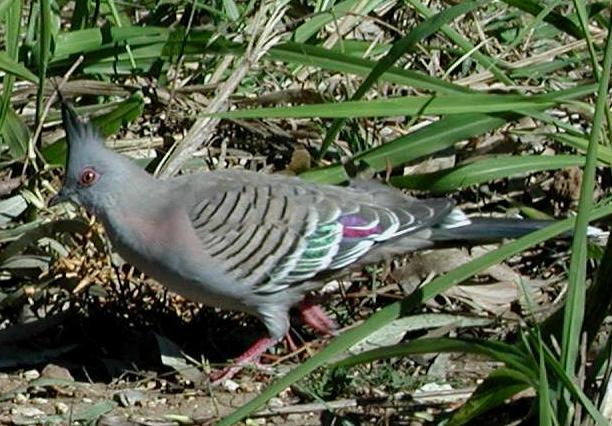 Ocyphaps lophotes, Crested Pigeon
Ocyphaps lophotes, Crested Pigeon
Class: Aves Order:The crested pigeon is a ground-feeder often seen in pairs here or small flocks. It originally inhabited lightly wooded grassland. However, the clearing of dense coastal forest has forced it into agricultural areas and towns. During flight, the wings of the pigeon produce a metallic, whistling sound. The crested pigeon is considered common throughout Australia.
Photographed behind St. John's College.
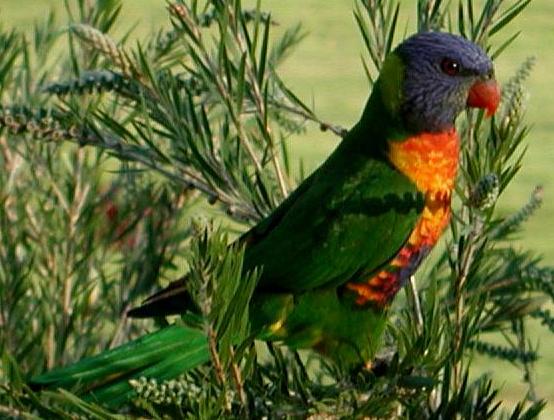 Trichoglossus haematodus, Rainbow Lorikeet
Trichoglossus haematodus, Rainbow Lorikeet
Class: Aves Order: PsittaciformesThe rainbow lorikeet is common in woodlands and well-vegetated woodland areas along the eastern and northern coasts of Australia. It is the only lorikeet with a blue head. Its underwings are orange and yellow and its bill is bright orange. Rainbow lorikeets are known for their particularly loud screeching while feeding on blossoms of flowering treed. Their brush tongues permit them to feed on pollen and nectar. It is widespread in coastal eastern Australia. Often seen in flocks (screeching) just after sunrise or just before sunset. Length: 28 cm.
Photographed at MBRS, NSI.
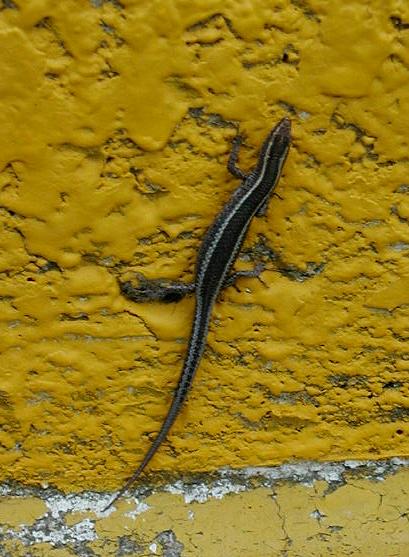
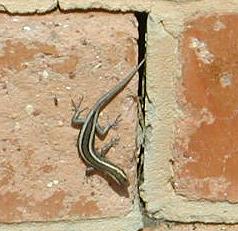
Cryptoblepharus virgatus, Wall Skink
Body length 4cm and tail also 4cm. Flat bodied with long slender limbs. Extremely swift and agile.
Eyes are relatively large and permanently open. Ubiquitous. Favors vertical surfaces like this brick wall. More common in urban landscapes than surrounding bush. Eastern and southern Australia.
Photographed at Women's College (right) and near St. Lucia Village (left).
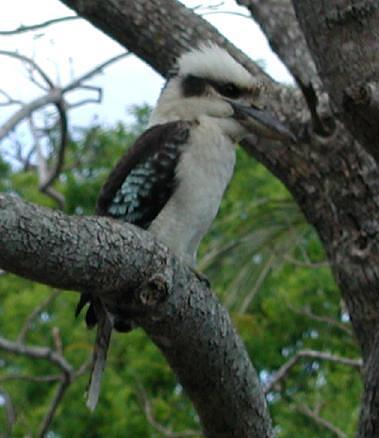 Dacelo novaguineae, "Laughing Kookaburra"
Dacelo novaguineae, "Laughing Kookaburra"
Phylum: Chordata Class: Aves Family: AlcedinidaeThe Laughing Kookaburra (Dacelo novaguineae) is the largest kingfisher. They have a loud, maniacal laughing call and are often heard in "chorus." They feed mainly on reptiles and large invertebrates. They are common in woodlands and forests in eastern Australia and are often seen in pairs. Length: 46cm.
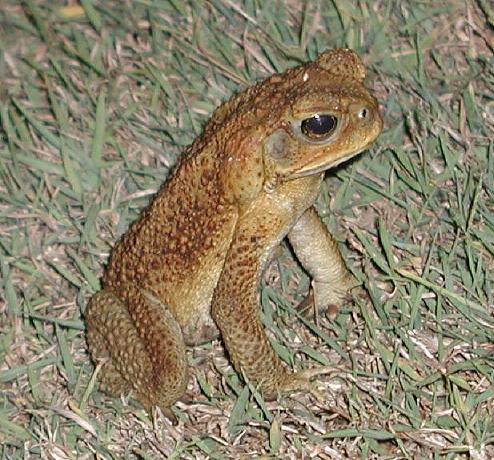 Bufo marinus, Cane Toad
Bufo marinus, Cane Toad
Very large. Head and face unlike any native Australian frog. The cane toad was introduced into Far North Queensland in 1935 to control grey-back and French beetles whose larvae stunt cane growth. The introduction had little effect on the cane beetles, but the cane toadhas spread south and west successfully competing with native animals for habitat, food, and shelter. It is an ecological threat to the enrivonment in Australia. Length: to 20cm.
Photographed at Women's College.
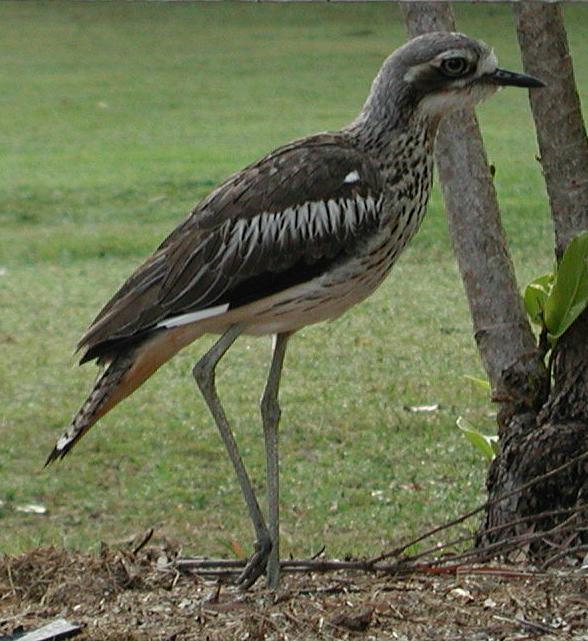 Burhinus grallarius, "Bush Stone Curlew" or "Thick-knee"
Burhinus grallarius, "Bush Stone Curlew" or "Thick-knee"
Phylum: Chordata Class: Aves Family: BurhinidaeThis bird lives in a large area of the Australian mainland, only being absent from the arid interior, the far southeast and the south coast. However, it is only very common in parts of northern Australia. During the day they sit quietly among the bushes, ducking as you come closer, pretending to be a bit of wood. At night they come alive, and their chorus of wails and whistles becomes loud, and goes on all night. Characteristic running gait with knees bent and head low. Call is a plaintive "Kerloo" heard in the evening. Length: 53cm.
Photographed behind the Biological Sciences Library.